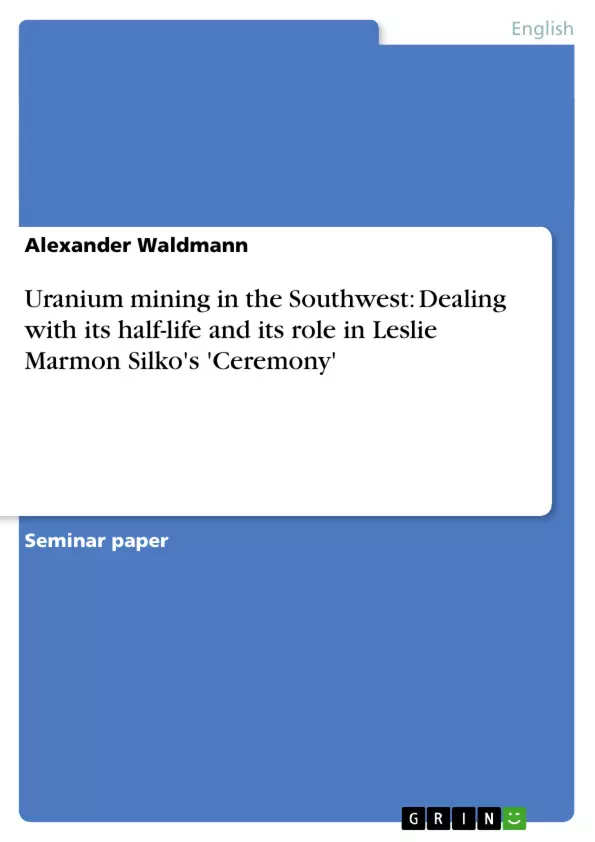“It is difficult to avoid the conclusion that much of the human cost of North American uranium production has been born, unwittingly and mostly unwillingly, by indigenous peoples” (Four Directions Council, 1987, 2).
This statement given in a report by the UN Commission on Human Rights reveals the problems and the negative side effects during the uranium milling process and the aftermaths on the indigenous tribes in the American Southwest. But what is the reason for this situation and what makes uranium mining so dangerous and causes one of the most dangerous decay products known to humans? This paper tries to answer these questions and the effects on the Laguna Pueblo people, dealing in particular with environmental and health risks. I will also attempt to compare the alleged benefits for the Laguna Indians and the long term effects of uranium and its half-life. Furthermore, I will point out the important role of uranium in Leslie Marmon Silko’s Ceremony and its power in the ceremonial process and Tayo’s healing. This healing process and the final understanding of the ceremony pattern are also connected to the Pueblo’s attempt to deal with the remains of the uranium mining age. Trying to clarify this entanglement will conclude this paper.
Inhaltsverzeichnis (Table of Contents)
- Introduction
- Uranium
- Environmental and Health Risks
- Cultural Effects
- Ceremony
- Conclusion
Zielsetzung und Themenschwerpunkte (Objectives and Key Themes)
This paper examines the impact of uranium mining in the American Southwest, particularly on the Laguna Pueblo people, focusing on the environmental and health risks associated with this industry. It also investigates the role of uranium in Leslie Marmon Silko's Ceremony and its connection to the Pueblo's attempts to deal with the legacy of uranium mining.
- The environmental and health risks posed by uranium mining.
- The cultural effects of uranium mining on indigenous communities.
- The significance of uranium in Leslie Marmon Silko's Ceremony.
- The connection between uranium and the healing process in Silko's novel.
- The challenges of managing radioactive waste and its long-term effects.
Zusammenfassung der Kapitel (Chapter Summaries)
The introduction outlines the significant human cost of uranium mining on indigenous peoples, particularly in the American Southwest. It highlights the dangers of uranium mining, focusing on the radioactive decay products and their impact on health and the environment.
Chapter 2 delves into the details of uranium mining, exploring its historical use for military purposes and its prevalence on Indian reservation lands. It examines the environmental and health risks associated with uranium mining, including the long-term consequences of radioactive waste and the dangers posed by radon gas.
Chapter 3 analyzes the role of uranium in Leslie Marmon Silko's Ceremony, examining its significance in the ceremonial process and Tayo's healing journey.
Schlüsselwörter (Keywords)
This paper focuses on uranium mining, environmental and health risks, indigenous communities, the American Southwest, Leslie Marmon Silko, Ceremony, radioactive waste, and the legacy of uranium mining. It explores the long-term impacts of this industry on both the environment and indigenous cultures.
- Citar trabajo
- Alexander Waldmann (Autor), 2004, Uranium mining in the Southwest: Dealing with its half-life and its role in Leslie Marmon Silko's 'Ceremony', Múnich, GRIN Verlag, https://www.grin.com/document/27660



